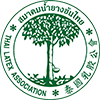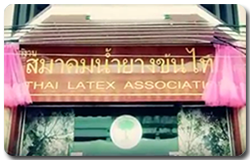NATURAL rubber, NR, was once a key pillar of the nation’s economy. But not anymore. Our production fell from the world’s number one to now be at number nine. I joined the Rubber Research Institute of Malaysia, RRIM, in 1973 when our NR industry literally ruled the world. The NR conferences we hosted attracted all the big names in the world rubber business. Any pronouncement by our rubber leaders was viewed seriously by business leaders around the world as potential policy directions. The RRIM enjoyed the kind of stature seldom experienced by a small developing country. The industry is now a pale shadow of that greatness.
Recent years have seen misfortune piling up, especially the upstream and midstream sectors. Production has been declining. The depressed rubber pricing which stagnated for several years was much to blame. This was exacerbated by the struggle to secure enough harvesting labour. The fact that big plantation companies moved away from rubber cultivation also contributed. A study has revealed that owners of the small rubber holdings are no longer full-time farmers. They also rely on external labour. It is no surprise that less than 400,000 hectares of the 1 million hectares cultivated are tapped. Most are collected as cup lumps.
Such production decline has impacted the midstream rubber processing business. Many have closed down. Some have shifted to Thailand, Vietnam and Indonesia. Those which stay operational have to import cup lumps from as far away as Africa. But with the recent announcement by the Ivory Coast to stop export, that supply source has shrunk. Many SMR factories now operate at below capacity. It is much worse for the latex concentrate factories. The country’s big glove factories which enjoyed bumper business during the pandemic had to rely on imports. But with the recent expansion in China’s glove business, our glove companies are pressured. Goodyear, a multinational tyre maker, has recently exited the country because of raw material supply issue.
The current surge in rubber price to RM4 a kilogramme is a welcome relief. Some analysts are not optimistic that the price can be sustained. Even if the price can be sustained, our struggle to obtain enough labour will not guarantee the necessary pick-up in production. As a country, we can no longer operate in such labour-intensive agriculture. We need a new business model. One that is less dependent on cheap labour but can still be lucrative to the overall industry. We need one that will attract back the big organised plantation companies. Smallholders should complement, not dominate the sector.
It is a known fact that the revenue from NR cultivation can come from two sources, latex and timber. So far, the primary focus has been on latex. Little attention has been paid to rubberwood. Most of the time, it is treated as incidental. Even the research has been focused on maximising latex not the wood. The pressure to rethink the business model cannot but shift our attention to now look at timber as the primary product and latex as the secondary output. A recent conversation with the deputy head of mission at the Swedish embassy has shed new light on the potential of reviving our timber business. If we can do that with the rubber tree, that would be a double bonus. In Sweden, it takes 80 years before they can harvest their timber.
Yet they are among the world’s top exporter of timber products. In the case of rubber, experts say we can harvest even as early as 15 years using the right timber clones. The right incentives must be put in place to attract big companies. With the recent foray of timber aggressively entering the construction business, there is no reason why investors will not be attracted.
In the EU, efforts are underway to increase the use of timber to replace high emission concrete. This is now made possible through new timber adhesive technologies including the use of Cross Laminated Timber, CLT, and GLUELAM Timber. Through such a business model, we can not only bring back the glory of the once flourishing timber business but also inject new vigour in the NR business.
Source : Global Rubbeer Markets |








